Five Zero Safaris
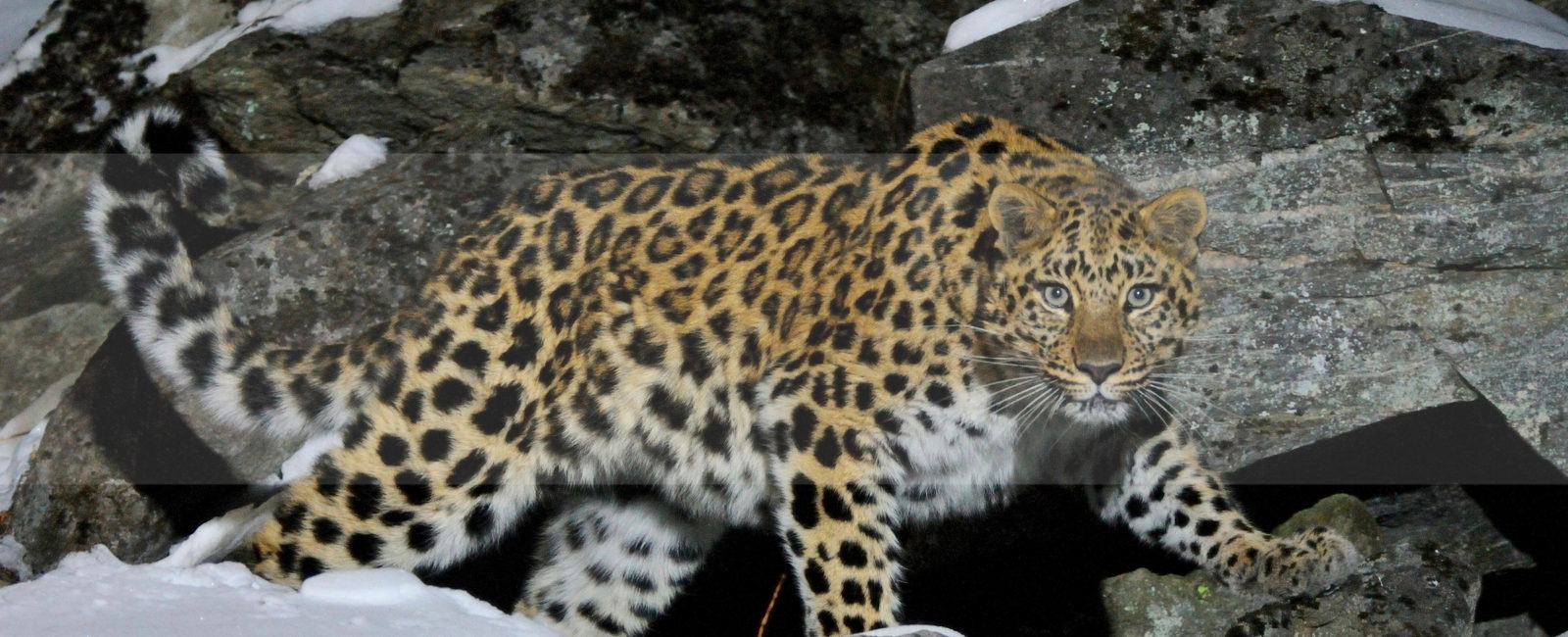

The Amur Leopard Safari in Russia
See the rarest cat in the world – the amur leopard.
This is an incredibly exclusive and unique opportunity! Very few people get the opportunity to see Amur Leopards each year, and we have managed to secure space for you to see and photograph the worlds rarest big cat.
Deep in Russia’s wild Far East, is a little known reserve where the last strong-hold of the Amur Leopard exists. Amur Leopards were on the brink of extinction with just 19 – 26 wild individuals in 2007, but due to growing interest, there has been a considerable effort to preserve and increase this species, and the numbers are now going up. This has created the opportunity of a life-time – to see and photograph a wild Amur Leopard.
You will be based in the heart of the reserve, and with the use of a hide/blind, watch as the leopards move through the area. The accommodation is simple, but you will defiantly be warm enough and well fed. For the more dedicated enthusiast, we recommend staying in the hide/blind for the duration of the safari, which gives you the best chance to catch all the Amur Leopard action. The hide/blind has bedding and bathroom facilities, and food is delivered, while radio contact keeps you in touch with the park rangers.
This safari has a set itinerary and set dates, and space is limited to just 3 people per week, so please contact our safari specialists soon to secure your space on one of the worlds most unique safaris!
Contact us for more information.
Suggested itinerary for the amur leopard safari in russia.
You will be met at the Vladivostok International Airport by your guide and translator, and begin the 3 hour drive to Kendrovaya Pad Reserve.
Once at the Forest Lodge, you will settle in with some good food and a briefing about the hide, and the activities in the days to come. If time allows, you will be able to go for a short walk in the surrounding forest, and get your first taste of what’s to come.
You will have exclusive use of the Amur Leopard photographic hide, and spend all day (recommended: and night) searching for any sign of an Amur Leopard. These days are all about patience and photography.
The hide accommodates 3 people and is comfortable with beds and a toilet. Food is delivered to the hide when needed to reduce the human presence in the area, and so maximise your chances of seeing an Amur Leopard.
After a final; morning in the hide, you will be collected by the park rangers and make your way back to the Forest Lodge. After a good shower, you will make your way back to Vladivostok, where you can enjoy the rest fo the day exploring this unique city.
The night will be spent in a hotel in Vladivostok.
After a good breakfast at the hotel, you will checkout and make your back to the airport in time for your onward flight.
Highlights from The Amur Leopard Safari in Russia
Best time to go:.
This is a customized safari with flexible dates.
7 Nights / 8 days
Accommodation:
Basic Forest Lodge/Hide
Start/End point:
Vladivostok International Airport (VVO)
Number of guests:
Maximum 4 guests
Wildlife highlights:
Amur Leopards, Sika Deer, Racoon Dogs
Package includes:
Full board accommodation in the Forest Exclusive use of the Amur Leopard Hide All internal transfers Russian - English Translator B&B accommodation in Vladivostok
A La Carte:
International airfares Lunch and dinner in Vladivostok Drinks Anything not mentioned in the includes
FiveZero Tip:
Camera equipment can be rented through FiveZero. For those looking to purchase or bring their own equipment, Kurt Jay Bertels , your photographic safari host, recommends the following equipment for The Amur Leopard Safari in Russia:
If you would like to get that perfect shot, why not ask our professional photographer to guide you on this safari, and show you how! Make it a Photographic Safari!
Be the first to know about new safaris and special offers:

- Amur Leopard Expedition
The Amur leopard expedition takes you on a quest to the Russian Taiga in search of the world’s rarest big cat.
The Amur Leopard Expedition
Amur leopards & siberian tigers.

The Amur leopard is the rarest of the big cats. It inhabits a narrow strip of land hemmed in by Russia, North Korea, and China. Primarily found in the Russian Far-East, the Amur leopard is critically endangered. Just around 90 individuals remain.
Conserving the Amur Leopard
We’ve spend three years researching partnerships, finding locals who put conservation before commerce, and investing in technology to bring comfort to an otherwise brutal quest in Russian mid-winter. Because the Amur leopard is critically endangered, 100% of the profit from our Amur leopard expeditions goes into conservation . Our goal here is to restrict commercial operations to a very limited number of trips to Amur leopard habitat annually. We work with trackers and rangers that are the very best, with decades of experience conserving the Amur leopard and expanding its habitat.
Photographing the Amur Leopard
Photography can be a key component of an Amur leopard expedition, but currently, the only sure way to get an Amur leopard in front of a camera is to bait it. Farmed roe deer are purchased, slaughtered, and the carcass is chained outside a hide. Photographers stay in the hide for a 3 or 4 days. When done in peak winter, this has a very high chance of attracting predators – both the Amur leopard and the Siberian tiger, whose territory overlap by the Chinese/North Korean/ Russian border. This is because prey is less abundant and the snow makes it hunting harder. A free meal is hard to pass up on. Voygr is firmly against the practice of baiting. Baiting is also frowned upon for most notable wildlife photography competitions.
However, the best possible images can be made by camera trapping. Our Amur leopard expeditions can get you some incredible images with a very high rate of success. We work with the same rangers that have helped the BBC, NatGeo, and Netflix film the Amur leopard and Siberian tigers via camera traps.
An Amur leopard expedition will take you to prime Amur leopard habitat, where we will attempt our luck at spotting and tracking leopards. Additionally, we will set several camera traps along known trails and territory markers where both Amur leopards and Siberian tigers urine-mark their boundaries. Serious photographers will have the option of installing and leaving behind DSLR camera traps that our team can maintain for several months. We will swap out the memory cards, make sure the gear remains working, and change batteries when necessary. Gear can be shipped back to guests after.
Bespoke Departures for the Amur Leopard Expedition
We don’t list the itinerary publicly because we have assessed that the habitat is not ready for mass-market tourism. If you’re interested in contributing to protect the Amur Leopard and embarking on a quest to see it, even if via game cameras, we’d love to build an expedition for you. Unlike our snow leopard expeditions (100% success rate, the Amur leopard expeditions has a low chance of success to actually see the leopard. However, the experience itself, is a once in a lifetime opportunity.
You’ll get to hang out with tough Russian rangers and anti-poaching teams that have basically saved the Amur leopard and Siberian tiger from the brink of extinction, and experience the immense beauty of the Russian taiga in the winter. You will have one of the world’s top expedition teams supporting you. Remote regions, winter expeditions, and difficult terrain are what Voygr specializes in. We keep our guests comfortable: no-matter the conditions. Since this expedition takes place in habitat that overlaps with the Siberian tiger, both animals will be sought for.
Just like all of our other expeditions, this tour is not subcontracted or given over for implementation to any other agency – we control all our own operations. We know the rangers, we know the drivers, and our own expedition leaders guide it.
Why Book With Voygr?
Actually local. at every destination..
We don’t subcontract our tours to “local” companies. We are the local company. At Voygr, our expeditions aren’t planned by “specialists” that have visited a destination once on a familiarization trip, 4 years ago. Our experts live and work in the regions where we take our guests.
Empowering Remote Communities
Our singular mission when starting Voygr almost a decade ago was to put more money into remote communities. Controlling our own operations means that we can own our own infrastructure, hire our own local employees with exclusive contracts and ensure that your dollars actually end up where you’re traveling to instead of lining pockets in NYC or London.
Conservation is Key
Environmental conservation and protecting endangered species are core values. Voygr commits 20% of our annual profits to the High Asia Habitat Fund . In addition, we support several environmental causes. Expeditions with Voygr are not just carbon neutral – they are Carbon Negative.
Read more about Voygr Expeditions to learn about our ethics, how giving back to the communities we travel to is part of our DNA, and what steps we take to actively preserve our planet.
Amur Leopard Expedition Bespoke Departure
Your First Name (required) Your Last Name (required) Your Email (required) Number of Guests Your Message - Type in anything else we need to know!
I consent to being contacted via e-mail.
Our Incredible Journeys
Snow leopard expeditions.

Award-winning snow leopard expeditions take you on a quest for one of the world’s most elusive cats in the Trans-Himalayas of India.
Photography Expeditions

Our photography tours take you to iconic regions like Ladakh . Our camera trapping workshops help you capture the rarest big cats up close.
- Central Asian Journeys

Journeys to Central Asia explore the glorious history of the Silk Route in Uzbekistan , the mighty mountains of Tajikistan and the beautiful steppe of Kyrgyzstan .
Amur Leopard Expeditions

Search for the rarest big cat in the world on our Amur leopard expeditions in the magnificent Russian Taiga.
Siberian Tiger Expeditions

Help conserve the beautiful Siberian tiger on our expedition to the Russian Far East in search of this king of the Taiga.
Bengal Tiger & Leopard Safaris

Witness the power of the Bengal tiger on bespoke and group safaris and the sublime grace of the Indian leopard on our safaris to Rajasthan, India.
Articles from the Voygr Expeditions Blog

RECAP: Our 2021/2022 Snow Leopard Tours in India
Spectacular snow leopard sightings, mating, and even a couple of kills rewarded guests in 2022.

How To: Snow Leopard Tour Packing List
All the info you need to pack. On this snow leopard tour packing list we'll tell you the must-haves, the should-haves, and what you can…

Snow Leopard Excursion Planning: Why Great Optics Are Critical
A snow leopard excursion to Ladakh or Mongolia needs powerful optics. Learn how they can make or break your dream vacation, and see our recommendations.
- Signature Snow Leopard Expedition • Ladakh
- Snow Leopard Expedition • Kyrgyzstan
- Snow Leopard Tour to Mongolia
- Snow Leopard Trip to Tajikistan
- Ladakh Photo Tour
- Camera Trapping Workshops
- Journey to Kyrgyzstan
- Journey to Uzbekistan
- Journey to Tajikistan
- Siberian Tiger Expedition
- Group Departure – Tigers
- Conservation
- For Tour Operators & Agents
Privacy Overview
Necessary cookies are absolutely essential for the website to function properly. This category only includes cookies that ensures basic functionalities and security features of the website. These cookies do not store any personal information.
Any cookies that may not be particularly necessary for the website to function and is used specifically to collect user personal data via analytics, ads, other embedded contents are termed as non-necessary cookies. It is mandatory to procure user consent prior to running these cookies on your website.

Fact Animal
Facts About Animals
Amur Leopard Facts
Amur leopard profile.
Ten thousand kilometres Northeast of Kenya there’s a cat whose scarcity has inspired great action on the part of international zoo associations.
The Amur leopard is the critically endangered subspecies of the famous African safari attraction; an animal who has been persecuted for its good looks to the point of becoming the rarest cat on earth.
This subspecies resides in southeastern Russia and northeastern China and is sometimes referred to as the Siberian leopard, Manchurian leopard, far eastern leopard, or Korean leopard.
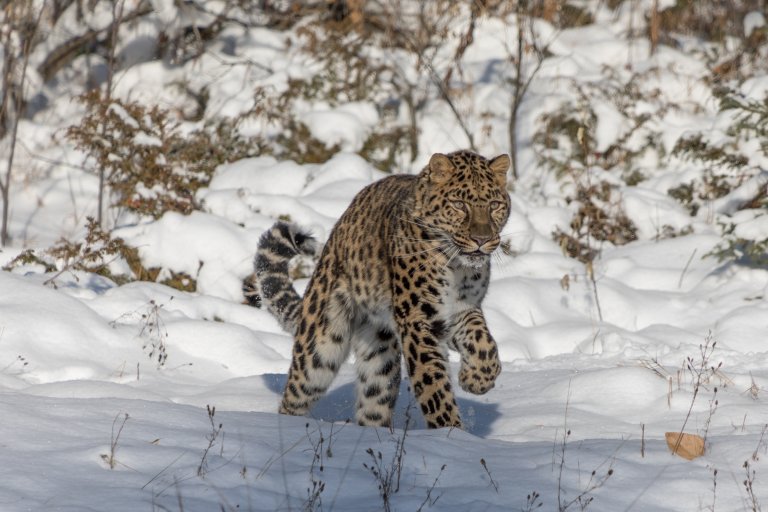
Amur Leopard Facts Overview
Amur leopards are well adapted to the cold environment and often inhabit mountainous areas, close to hunting trails and migration routes of wild animals.
These stealthy felines are opportunistic carnivores and are often called ‘the silent killer’. They will prey on a variety of animals, such as sika deer, elk, wild boar , badgers, hare and mice.
The Amur leopard has been reduced to populations that may be as low as double-digits. Yet, concentrated conservation action and the animal’s natural resilience have started to see the tide turn.
This is a perfect case study of the benefits of and necessity for effective conservation efforts both in the wild and inside accredited zoos, and their ability to bring a species (or in this case, a subspecies) back from the brink of extinction .
The Amur leopard is not out of the woods yet, and it still faces legitimate threats from human encroachment, but within the next couple of decades, and as long as efforts don’t let up, we could see it bumped up a status.
Interesting Amur Leopard Facts
1. they are the rarest big cats.
These leopards are said to be the rarest to see in the wild and may be the most endangered cat on earth. Some estimates suggest only 100 remain in the wild, others as low as 60, with most claiming no higher than 120.
These big cats live in some very remote regions. They’re also mostly nocturnal, making the chances of stumbling on one even slimmer. 1

They are high on our list of The Most Endangered Animals in the World .
2. They’re one of the big five
The Amur leopard is a subspecies of the African leopard , considered the cat with the widest distribution on Earth. Panthera pardus is listed as vulnerable on a global scale, and locally extinct in numerous countries it once called home.
The Amur leopard subspecies, Panthera pardus orientalis is probably the closest to extinction. While their habitat has plenty of room for more leopards in it, their issue is primarily related to poaching.
3. They’re apex predators
As predators at the very top of their natural food chain, these are significant influences on their ecosystems. Apex predators create the upper bound for the animals that occupy the lower niches and are as relevant to communities as the plants that form their foundation.
Amur leopards are creatures of habit, following the same hunting trails and occupying the same sleeping areas, month after month. Once they’ve chosen a territory, they’ll stick with it, remaining solitary until it’s time to breed.
Within these territories, the leopards would naturally be keeping a healthy balance of biodiversity, and this makes their survival important to the ecosystems of vast forest networks in Russia and China.
However, their incredible fur brings a high market value and makes them an appealing target for poachers.

4. Their pale cream-colored fur distinguishes it from other subspecies
While subspecies of leopard can be hard to separate in appearance, the thicker, paler cream-colored fur of the Amur leopard distinguish it from other leopard subspecies.
Particularly in winter, when the length of their coat hair can grow from 2cm in the summer up to 7cm for the cold, harsh climate with heavy snowfall.
Amur leopards also have have longer limbs and wider paws for walking through deep snow, and can wrap their tail around themselves to keep warm.
Each leopard has unique rosette patterns, that help identify each individual like fingerprints of humans.
5. They can take down prey 3 times their own weight
Amur leopards are relatively small in body size measuring between 82–136 cm (32–54 in) and weighing 25–48 kg (55–106 lb), which is around 13-14 kg (30 lb) smaller than their African counterpart.
Their prey typically consists of ungulates, such as sika deer, elk and boar and their immense strength allows them to take down even larger prey.
They are capable of carrying their meal into trees, so their food is not taken by other predators.

6. Anti-poaching programs seem to be working
High levels of protection and effective enforcement of laws have possibly begun to increase the population of Amur leopards in protected areas.
Numbers are said to be rising as a result of some heft fines and threats of imprisonment. In Russia, poachers can be fined tens of thousands of dollars, and possession of their fur comes with similar penalties and possible jail time.
This is more than ten times the amount the fur would make on the market in Russia, so it works well as a deterrent, as long as it’s enforced. 2

7. But poaching only tells part of the story
While the restriction on direct hunting of Amur leopards is significant and seemingly effective, other threats to the species come from the classic cases of habitat fragmentation and resource competition.
Human population increases bring with them increased demand for meat from the forest, putting them in direct conflict with the leopards for food, and chopping up their forest habitats into agricultural, transport and urban terrain.
8. They stand a good chance of rebounding
Many factors make the leopard a resilient animal. Despite their solitary nature, they adapt well to different hunting grounds. Females can breed at any time of the year, and cubs are independent by 16 months.
Breeding dens are usually on cliff faces and rocky outcrops, well away from human interference.
This provides a fast reproductive cycle that should allow these leopards to expand back into their natural niches if left alone, though the range of dispersion for offspring is limited by habitat fragmentation.
9. They aren’t particularly dangerous
Leopards are large, powerful predators, but they’re very shy and secretive, too. While there may be some overlap in human and leopard patrols, the chances of an attack are very slim.
Still, with prey scarcity on the rise for Amur leopards, these chances do increase, further emphasising the importance of a balance between human and wildlife resource exploitation in the forest.
Each individual has a range of up to 300km, signifying the importance of wide stretches of uninterrupted habitat to their survival. 3
10. Breeding programs could help
In 1961, a captive population of Russian leopards was bred from nine individuals. However, the offspring didn’t resemble the wild variety as much as expected, and it was found that they had accidentally been bred with a very similar Chinese subspecies.
This is a huge red flag when it comes to reintroduction, as breeding programs must keep an accurate cross-section of wild gene availability to each region; introducing new breeds could have serious adverse effects.
However, it was established that this overlap in genetic composition was the cause of a healthy amount of overlap in the two subspecies and that the products of the breeding program would be fit for reintroduction.
In fact, since the separation of the two subspecies was mostly human-caused, it was thought that the accidental mix-up would create animals that even more reflected the pre-human populations than they do now and may even be a better fit.
Currently, four regional zoo associations manage ex-situ programmes for Amur leopards and participate in the WAZA Global Species Management Plan (GSMP), established in April 2013. They have managed to retain 91% gene diversity and had as many as 217 individuals across 88 institutions by 2018. 4
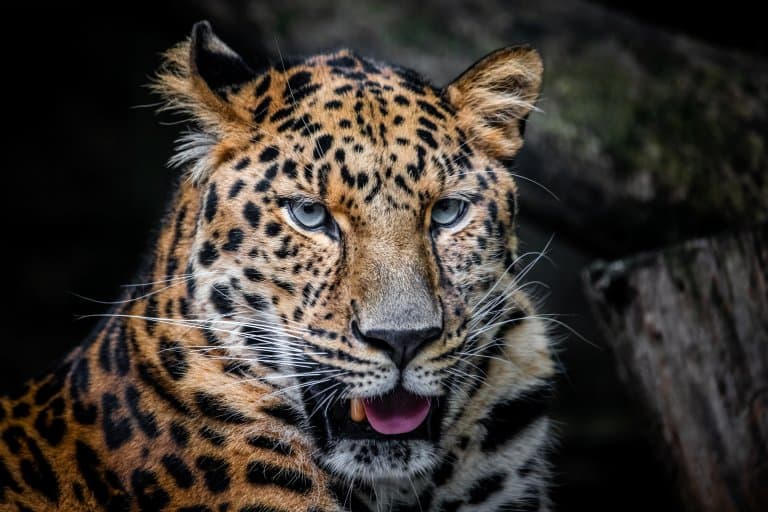
Amur Leopard Fact-File Summary
Scientific classification, fact sources & references.
- Nick A. Romero (2022), “ Different Types of Leopards “, AnimalWised.
- “ Top 10 facts about Amur Leopards “, WWF.
- Anna V. Vitkalova (2016), “ A complex approach to study the Amur leopard using camera traps in protected areas in the southwest of Primorsky Krai (Russian Far East) “, CyberLeninka.
- O’Brien, S. J., & Johnson, W. E. (2005), “ BIG CAT GENOMICS “, Annual Review of Genomics and Human Genetics.
Amur Leopard
Slowly stalking down the snowy hillside, the Amur leopard watches its prey through the trees. In the clearing below, a sika deer munches on tree bark, one of its few remaining food sources during the cold Russian winter. The leopard crouches, its body so low to the ground that its belly fur brushes the snow. Suddenly it bounds and springs forward, tackling the deer from 10 feet away. It’s dinnertime.
Most people think of leopards prowling the savannas of Africa, but these spotted predators thrive in many different countries and habitats . Amur leopards can be found in the mountainous forests of eastern Russia and northern China . Named after the Amur River, a body of water that runs along the border of both countries, these cats are well adapted to this harsh environment. Their soft, dense fur keeps them warm in the bitter cold, and their large paws work like snowshoes to let them walk on snow without sinking.
Amur leopards weigh about 80 pounds, some 30 pounds less than the average African leopard . But these cats can still take down prey up to three times their size. They prefer to feast on deer and boar, but will eat rabbits and mice if they can’t find bigger game. Scientists sometimes call Amur leopards the “silent killer” since they’re so good at sneaking up on prey.
BOUNCING BACK
Loss of habitat and poaching have made Amur leopards one of the rarest wild cats on Earth—and the world’s rarest leopard. Thanks in part to a newly established national park along the Russian and Chinese border, however, Amur leopards are clawing their way back. Since the 647,400-acre refuge dubbed Land of the Leopard National Park was created in 2012, the Amur leopard population has jumped to about 80 individuals in 2018, up from only about 30 in the early 2000s. Officials believe that effective law enforcement in the park will help keep the population climbing. So hopefully, even more of these leopards will be spotted soon.
Explore more!
Amazing animals, comeback critters, save the earth tips, endangered species act.
- Terms of Use
- Privacy Policy
- Your California Privacy Rights
- Children's Online Privacy Policy
- Interest-Based Ads
- About Nielsen Measurement
- Do Not Sell My Info
- National Geographic
- National Geographic Education
- Shop Nat Geo
- Customer Service
- Manage Your Subscription
Copyright © 1996-2015 National Geographic Society Copyright © 2015-2024 National Geographic Partners, LLC. All rights reserved
- Central African Republic
- Democratic Republic Of Congo
- Indian Ocean
- Republic Of Congo
- South Africa
- Latin America
- Galapagos Islands
- North America
- Polar regions
- Arctic Canada
- Australasia
- Gorilla Tracking
- Grizzly Bears
- Polar Bears
- Puma Tracking
- Snow Leopards
- Blue Whales
- Bengal Tigers
- Siberian Tigers
- African Lions
- Spirit Bears
- Lowland Gorillas
- Experiences
- Jungle Holidays
- Bush and Beach Combinations
- Conservation Travel
- Natural World Heroes
- Work with Us
- Consumer Protection Overview
- Privacy Policy
- Press and Awards
- Client Reviews
- Expedition Leaders
- Specialist Leaders
- Expeditions for Change
- Journey to Natures Edge
- Country: Settings: Country:
- Currency: Currency:
- Call Us 01273 691642
- Destinations
- Gorilla Trekking
- EXPERIENCES
- Journey to Nature's Edge
Land of the Leopard National Park

In the extreme southeast of the country, close to the borders with China and North Korea, Russia has established a 650,000-acre national park to protect what is regarded as the world’s rarest cat, the Amur leopard. Around 70-80 individuals are estimated to survive in the wild, making this protected area – which covers around 60% of the leopards’ habitat – a vital step forward in the effort to save this species from extinction. The remote forested area within Russia’s Primorsky Krai region also encompasses the cats’ breeding grounds, a move which provides the Amur leopard population with its best possible chance of expanding. 2017 also saw the opening of a $6million research centre within Land of the Leopard, with its administrative building and laboratories comprising the world’s largest facility dedicated to the conservation of the Amur leopard. The enterprise has also added a hotel and museum for visitors to the park to enjoy. To embark on a trip to this far-flung corner of the world, in search of the rarest feline of them all, is to truly step into the wild.
The rarest of the rare
A decade ago, the wild population of Amur leopards was thought to number no more than 30. Today, despite still being listed as critically endangered by the IUCN, the world’s rarest cat is beginning to make a comeback. Still, few people have ever seen an Amur leopard in the wild, and most footage and photographic evidence of the species comes from specimens in captivity or remote camera traps.
Although smaller than most other leopard subspecies, the Amur leopard is well adapted for its life in the hills and forests of southeast Asia that it calls home. Its thick fur insulates it when the winter snows start to fall, and when hunting prey – usually deer, moose and wild pig, but sometimes smaller mammals and even young black bears – the big cat can reach speeds of up to 37mph.
The Amur leopard is a solitary hunter, ranging across a territory that can comprise between 19 and 116 square miles, depending on the individual. They share some of their high-altitude habitat with the much larger Siberian tiger, and will actively avoid encounters by settling on steep ridges, offering them a vantage point from which they can track their prey – and any competitors – from afar.
Contact us for a bespoke quote.
What would you like to search for?
The WWF is run at a local level by the following offices...
- AsiaPacific
- Central African Republic
- Central America
- Democratic Republic of the Congo
- European Policy Office
- Greater Mekong
- Hong Kong SAR
- Mediterranean
- Netherlands
- New Zealand
- Papua New Guinea
- Philippines
- Regional Office Africa
- South Africa
- South Pacific
- Switzerland
- United Arab Emirates
- United Kingdom
- United States
New footage reveals family life of elusive Amur leopard
Video footage released today of one of the most endangered species on the planet, the Amur leopard, provides vital information to help conservation efforts.
Related links
related articles
DIALOGUE WORKSHOP WITH AQUACULTURAL CORPORATES UNDER BIODEV2030 INITIATIVE
Launching Species Conservation Fund in Viet Nam
Fishermen have to be Part of the Solution, or they are going to be Part of the Problem

BREAK THE SNARING CYCLE
Wildcats conservation alliance.
Saving wild tigers and Amur leopards for future generations!
We are on a mission to save wild tigers and Amur leopards for future generations by raising awareness and funding carefully chosen conservation projects. We support locally appropriate programs that address key conservation issues through anti-poaching activities, population monitoring, wildlife health monitoring, conflict mitigation, education & outreach and capacity building.
Where we work
Tails from the wild.
Join us as we delve into topical issues affecting the preservation of wild tigers in our brand new podcast. In each episode, we meet with experts working on the front line to save wild tigers and take a deeper dive into the threats and solutions they face on their quest to protect tigers and their habitats.
Hosted by WildCats science communicator, Amy van Gelder, this podcast can be found wherever you get your podcasts from. Make sure to subscribe to WildCats Pawcast so that you don’t miss an episode.
How you can help
Fundriase for us.
Want to fundraise for tigers and Amur leopards, but not sure where to start? WildCats has you covered…
MAKE A DONATION
We channel 100% of donations we receive directly to conservation projects that protect wild tigers and Amur leopards.
VISIT OUR ROAR STORE
Fierce clothing that gives wild tigers and Amur leopards a future.
Latest news and views

WildCats Conservation Alliance, (formerly ALTA & 21st Century Tiger) is a wild tiger and Amur leopard conservation initiative between Dreamworld Wildlife Foundation and Zoological Society of London, (UK charity # 208728).
- Zoos fundraising gallery
- Zoo Members area
- Historical Projects
- News & Views
- Fundraising
- Challenge events
- Give as you live
- Other ways to donate
- Amur Leopard Photo Gallery
- Amur Leopard Reintroduction
- Amur Tiger Facts
- Sumatran Tiger Facts
- Latest Research
- Donate today
- Give Monthly
- San Diego Zoo
- Safari Park
- Special Experiences
- Plan Your Visit
- Renew/Rejoin
- Conservation
- Take Action
- Adventure Travel

MULTI MEDIA NEWS RELEASE
FOR IMMEDIATE RELEASE JUNE 22, 2020 CONTACT: San Diego Zoo Global Public Relations 619-685-3291 WEBSITE: SanDiegoZoo.org
MULTIMEDIA NEWS RELEASE
Pair of Endangered Amur Leopard Cubs Born at the San Diego Zoo
Fewer than 100 Are Believed to Still Survive in Their Historic Range
Guests at the reopened San Diego Zoo are getting a first look at two endangered Amur leopard cubs, born April 26, 2020, as they explore their outdoor habitat with mom, Satka. The cubs’ birth is particularly significant for their species, as fewer than 100 Amur leopards are believed to exist in their historic range in Russia and China.
After their birth, the cubs spent most of their time in an indoor habitat with Satka. They started to emerge from their den at 20 days old, and had their first visit to the outdoor habitat 10 days later. They are now venturing out to explore with their mother daily.
Satka can be seen monitoring the habitat, demonstrating her natural instincts to watch out for any potential threats to her cubs. The cubs are already showing natural behaviors of stalking and climbing. Wildlife care specialists observed one of the cubs climbing about four feet up a tree, before Satka brought the cub back to the ground.
“The cubs are climbing up on the rocks, they are getting into the trees, sometimes listening to mom and sometimes not,” said Kelly Murphy, senior wildlife care specialist, San Diego Zoo. “Their personalities are still developing, and I’m looking forward to see what they become.”
The cubs, who do not have names yet, will get their first hands-on veterinary exam this week, which will also reveal the sex of each cub. This is Satka’s second set of cubs, and they are being raised in the leopard habitat in Africa Rocks. Although Amur leopards are not a leopard species found in Africa, Satka and male Amur leopard Oskar were moved to this habitat to provide them with a space of their own for breeding.
Amur leopards are the rarest of the big cat species on the planet. This species was once found in northeastern China, Russia and the Korean peninsula, but those populations have been decimated, due to loss of habitat and poaching for their thick, spotted coats. It is estimated there may be as few as 85 currently living in their historic range in the Primorye region of the Russian Far East.
San Diego Zoo Global and other zoological organizations around the world have joined together in efforts to conserve this species. More than 94 institutions, caring for over 220 leopards, take part in the Global Species Management Program (GSMP)—an international conservation effort in which scientists work to increase regional animal populations.
Bringing species back from the brink of extinction is the goal of San Diego Zoo Global. As a leader in conservation, the work of San Diego Zoo Global includes on-site wildlife conservation efforts (representing both plants and animals) at the San Diego Zoo, San Diego Zoo Safari Park, and San Diego Zoo Institute for Conservation Research, as well as international field programs on six continents. The work of these entities is made accessible to over 1 billion people annually, reaching 150 countries via social media, our websites and the San Diego Zoo Kids network, in children’s hospitals in 12 countries. The work of San Diego Zoo Global is made possible with support from our incredible donors committed to saving species from the brink of extinction.
Link includes:
- B-roll and photos of amur leopard cubs and their mother
- Interview with Senior Wildlife Care Specialist Kelly Murphy.
- San Diego Zoo Tickets
- Safari Park Tickets
- Help Center
- Plan Your Visit
- Places To Stay
- Special Experiences
- Youth Programs
- Student & Youth Groups
- Events & Catering
- Live Cameras
- Our Mission
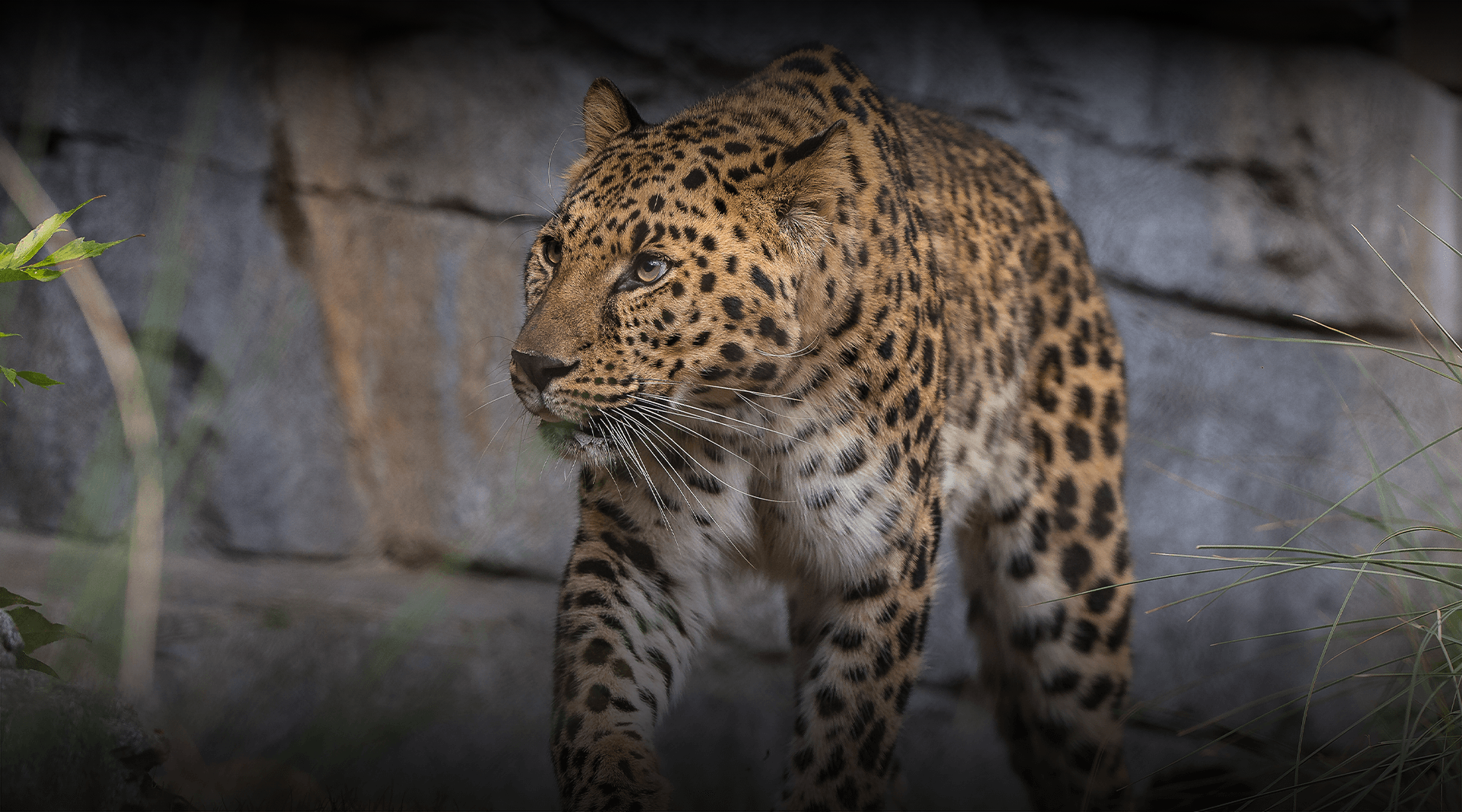
Amur Leopard
At a glance.
- Location: Africa Rocks and Asian Passage
- Conservation Status: Endangered
The leopard is the epitome of stealth. Its very name brings mental pictures of this great spotted cat crouched on a tree limb awaiting the approach of a deer, or of a sleek, spotted body slipping silently through the dry savanna grass with scarcely a ripple as it nears its chosen target. Amur leopards love climbing, exploring, and playing with new things, and have a keen appreciation for scents; wildlife care specialists add spice oils like cinnamon, spearmint, and lavender to their hay and climbing structures. But, like most cats, they also sleep a lot. You'll find leopards in Africa Rocks and also in Asian Passage.

PREFERRED HOTELS

Picture Your Special Day at the Park!

Save the Chubby Unicorns

Gorilla Shadow
Safari animals: the story of leopards (and the best places to see them)
Dec 10, 2019 • 7 min read
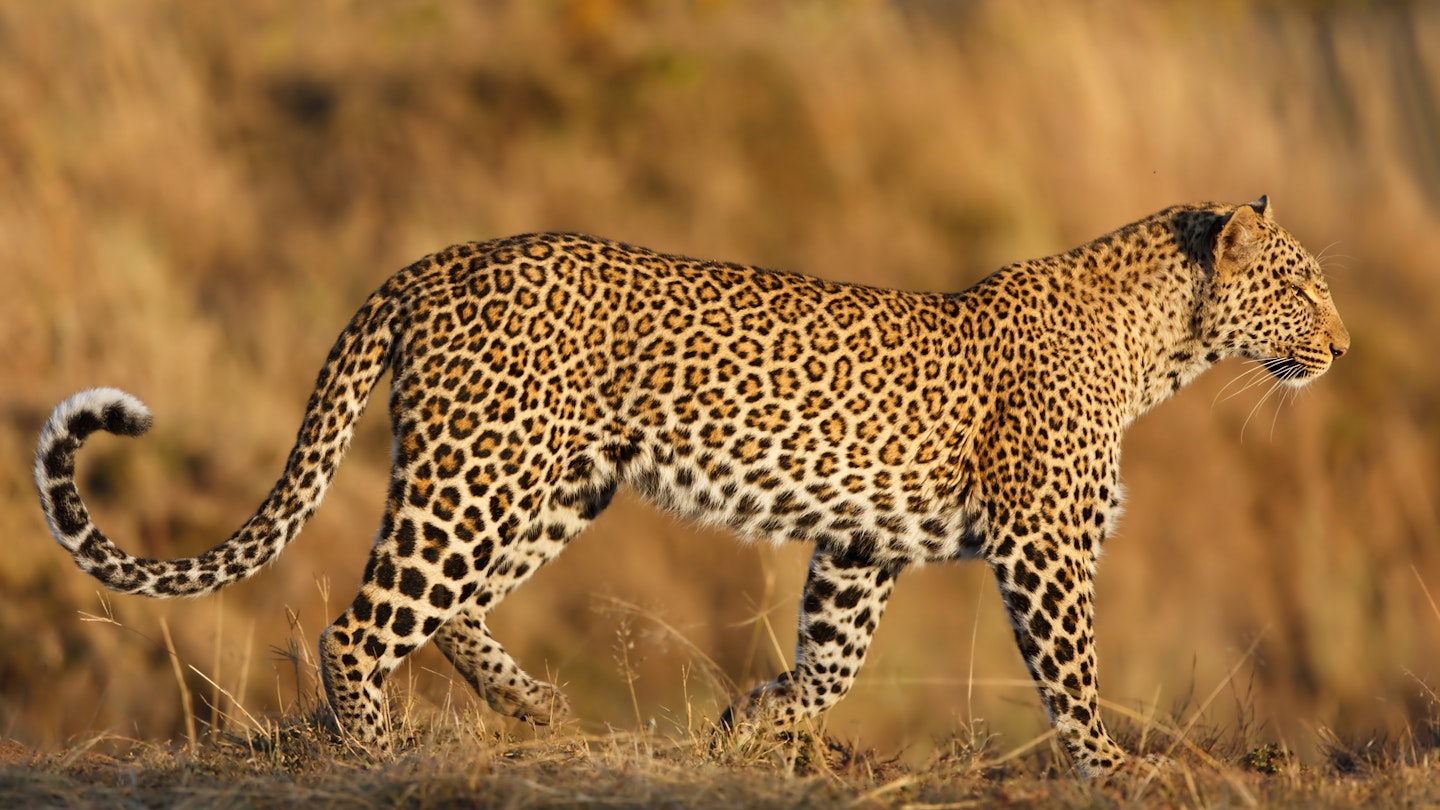
The rosettes on a leopard's coat mimic dappled shade on foliage and grasses © Maggy Meyer / Shutterstock
Leopards are among the most difficult of the big cats to see in the wilderness of Africa , which may be why they’re one of the great prizes of any safari. That, and the fact that this is one beautiful cat, the epitome of feline grace.
Leopards are masters of stealth and of camouflage, and many will watch you pass without you ever knowing that they’re there. And yet, these are the most adaptable and widespread of Africa’s cats. Read on for our snapshot of Africa’s most enigmatic big cat, and learn where best to see them.

Leopards: defined by their spots
Leopards are defined by their spots – if you see one up close, you’ll understand why their intensely beautiful coats have become a global fashion accessory, as beloved by African strongman leaders as by high-street fashionistas. The spots are actually rosettes, a circle of black spots surrounding an orange core. Leopards spend much of their time in trees or undergrowth, and these colours serve leopards well, allowing them to become one with the dappled foliage of leaves and grasses. In some forest regions, including the Aberdare Mountains in Kenya’s highlands, leopards can be almost entirely black, although sightings are extremely rare.
Read more: Where to go when: the best places to visit through 2020
Muscular and not much smaller than female lions, male leopards can reach just under three metres-long, including the tail, although around two metres is the norm. Leopards stand between 55cm- and 82cm-tall at the shoulder, and adult males can weigh as much as 90kg; females are smaller than the males – the largest female weighs in at just 42kg.

A solitary cat
There are few more solitary creatures in the animal kingdom than a male leopard. Except when mating, male leopards spend their lives alone, either roaming in search of a territory or holding fast to one that they will fight to protect. Females are similar – solitary by preference, territorial – except when they have cubs.
Read more: Where you should go on your first safari in Africa
After a three-month pregnancy, female leopards give birth to as few as one and as many as four cubs – between 50% and 90% of these cubs will die during their first year, falling prey to spotted hyenas, lions, baboons and wandering male leopards eager to mate with the mother. The cubs remain wholly dependent on their mothers for their first year of life. The mothers begin to wean the cubs after a couple of months, and by four months the cubs are only eating meat from animals killed by their mother. As the cubs grow, the mother will teach them the skills of hunting – for both mother and offspring, this is the most social time of a leopard’s life. When 18-months or two-years-old, a young leopard will either leave its mother or the mother will force it out to make its own way in the world and find its own territory.
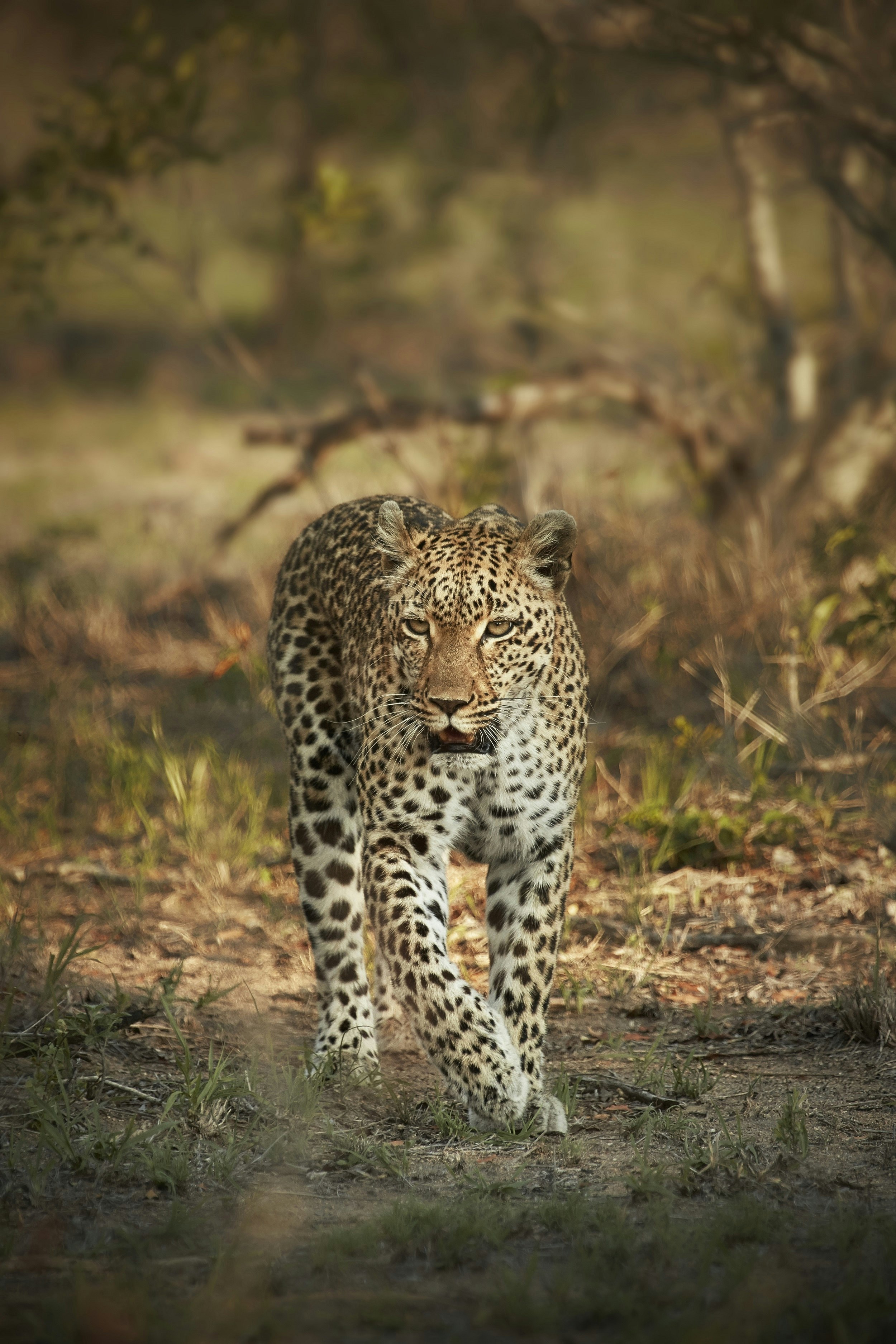
The skill of the ambush kill
One reason leopards have proved so adaptable is that they are willing to eat a wide range of prey – leopards have been recorded eating more than 200 different species. That said, a leopard has clear preferences: in Africa, impala, springbok and/or nyala routinely make up more than half of a leopard’s diet. They also commonly eat warthogs, zebras, wildebeest and steenboks. Anything larger than these species would ordinarily be too big for a lone leopard to kill and eat, although one exceptionally strong leopard was recorded bringing down a 900kg eland, the largest of all antelope species. Leopards will also kill cubs of rival predators, including lions, cheetahs and hyenas, while forest-dwelling leopards also eat primates.
Leopards frequently live in close proximity to human settlements, which means that leopards can come into conflict with people when the former kills domestic livestock and dogs. Attacks on people by leopards are rare.
Read more: A day on safari in Africa: what you can expect in camp and in the wild
Leopards are predominantly ambush hunters, usually after having stalked to within four to five metres of their prey. For all of their stealth and ability to approach prey without detection, leopards are successful only between 5% and 38.5% of the time when trying to make a kill. When they are successful, they kill prey by suffocation, clamping their jaws around the throat and/or muzzle of their kill. Because they are solitary, leopards have learned to defend their prey from more numerous lions and hyenas by carrying the carcass up into the branches of trees – leopards are the most skilled tree-climbers of all the big cats, even when hauling twice their own body weight with them – where few other species can follow.
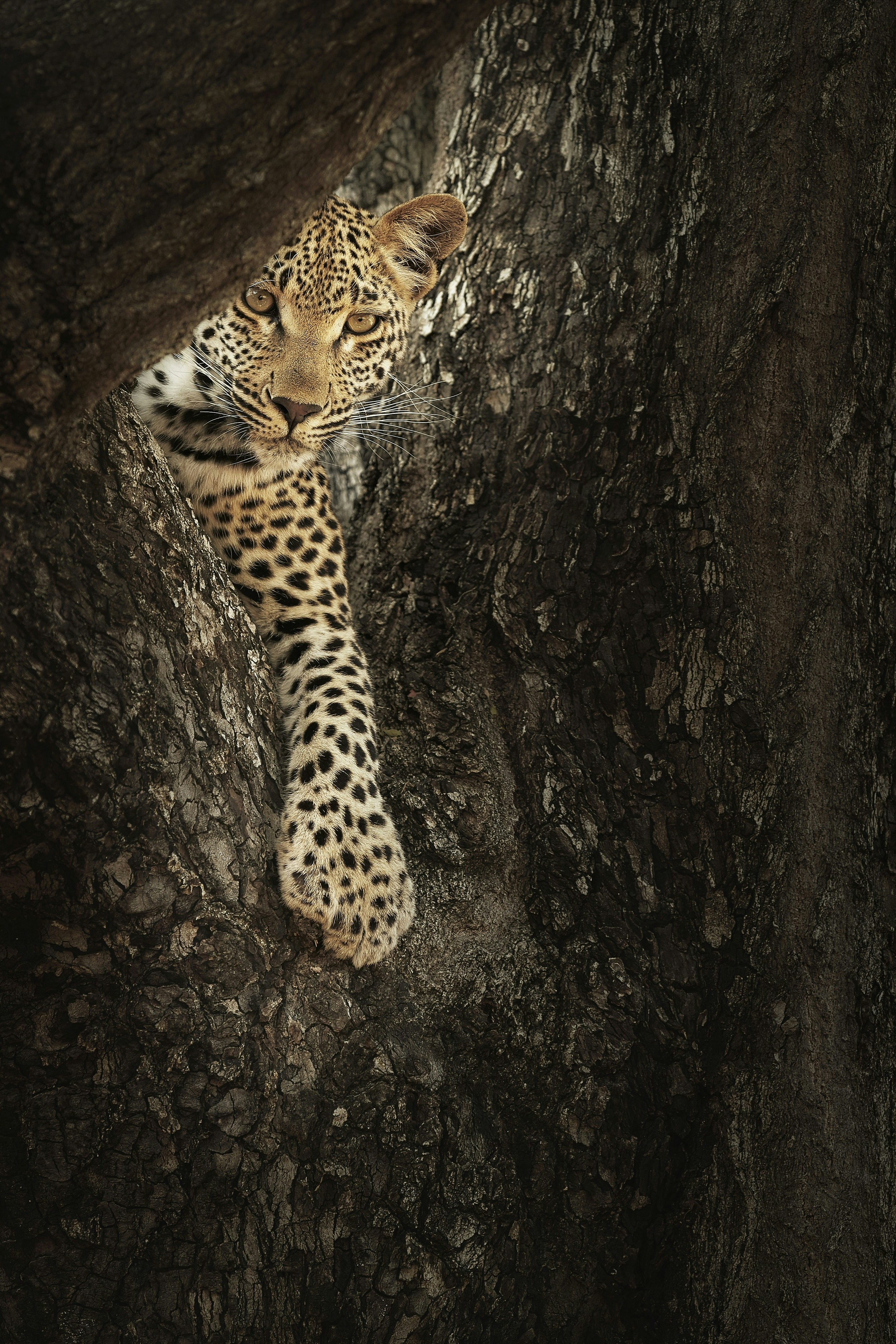
The leopard's preferred environment
In total, leopards are found in an estimated 62 countries. The stronghold of the African leopard is in East Africa and Southern Africa . The species has largely disappeared from North Africa and is rare in West Africa and Central Africa. Beyond Africa, there are important leopard populations in the Arabian Peninsula, Iran, India and Siberia; the Amur leopard is one of the most critically endangered sub-species of cats anywhere on earth.
Read more: Are you ready for a self-drive safari in Africa?
Leopards prefer woodlands – they need cover in order to stalk their prey – and are most often found in the trees and other foliage along riverbanks. In some places, like along the Seronera River in Tanzania’s Serengeti National Park where there are many leopards, a leopard’s territory will be quite small and extend along the river’s shoreline; the smallest recorded territory for a leopard is 5.6 sq km. In contrast, out in the arid Kalahari of Botswana and Namibia , where water and prey are scarce, a leopard’s home range can extend across 2750 sq km.
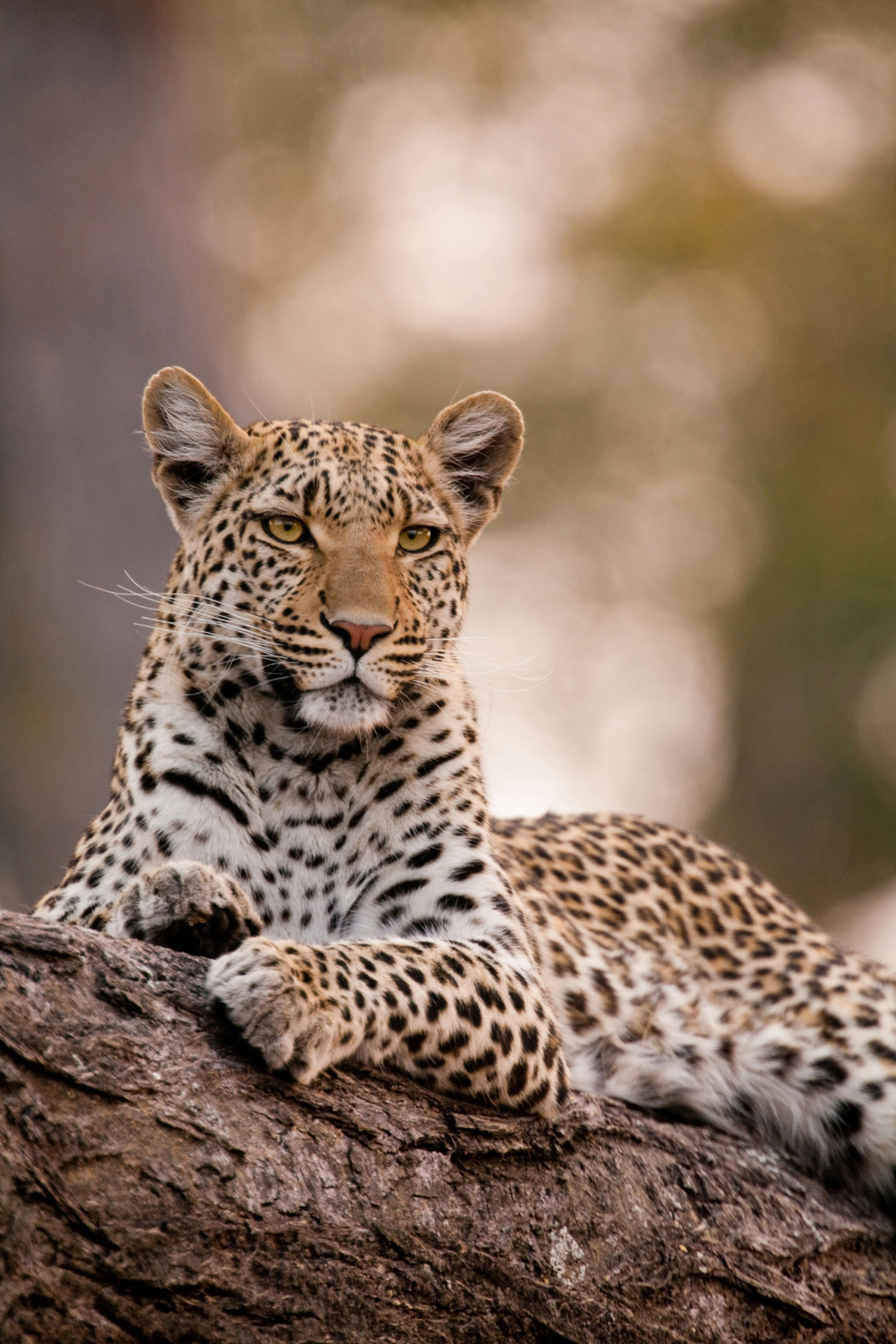
The best places to see leopards
Botswana: Botswana is excellent for spotting leopards, and a testament to the leopard’s adaptability – leopards are commonly seen in watery habitats like Chobe National Park and the Okavango Delta , but also in the desert-like Central Kalahari Game Reserve (CKGR). Kenya: Kenya ’s parks are prime leopard-watching areas. Leopards are present throughout the country, but sightings are most common in the Masai Mara National Reserve and the surrounding community-run conservancies , as well as Lake Nakuru and Tsavo West national parks. Malawi: An emerging safari destination, Malawi deserves special mention for Nyika National Park , home to more than 100 leopards and often spotted on night wildlife drives. Namibia: Plenty of leopards call Namibia home, but they’re generally more elusive than elsewhere. Try the private reserves such as Okonjima and Erindi. The floodlit waterholes in Etosha National Park are also decent shouts after dark. South Africa: Leopards are found across the country, but the northeast is best, especially in Kruger National Park and the surrounding reserves (such as Sabi Sand ). Elsewhere, try Mapungubwe National Park , Madikwe Game Reserve or Kgalagadi Transfrontier Park . Tanzania: Tanzania’s Serengeti is one of the best places on the planet for watching leopards. Sightings are also possible in Tarangire National Park , Selous Game Reserve , Katavi National Park and elsewhere. Zambia: The national parks of Kafue and South Luangwa Parks are known for their leopard sightings. Zimbabwe: The national parks of Mana Pools and Hwange have healthy leopard populations, though sightings are not as common as you might expect.
Leopards in peril?
The leopard’s strengths – the beauty of its coat, the adaptability that allows it to live across many different habitats and close to humans – also puts it in harm’s way. Leopards are much sought-after by trophy hunters. They are also often killed in retaliation for killing livestock. And they are also highly susceptible to the clearing of forests. The leopard is currently listed as Vulnerable by the International Union for the Conservation of Nature (IUCN).
Read more: Turning myth into reality: the white lions of Timbavati
Cat conservation NGO Panthera has implemented one particularly inventive measure that has been a critical conservation success story in South Africa and Zambia. In the former, a leopard-skin shawl or cape has long been the traditional attire for male members of the five-million-strong Zulu Shembe Church. But with leopards increasingly under threat, Panthera created, and then introduced, an imitation faux-leopard-skin alternative that has been embraced by the church’s leadership and most members. A similar approach in Barotseland, close to Liuwa Plain National Park in southwestern Zambia, has seen the Barotse Royal Establishment agree to replace real pelts with faux fur in their elaborate annual procession between their wet and dry season headquarters.
Related articles: Safari animals: the story of lions (and the best places to see them) Safari animals: the story of rhinos (and the best places to see them) Safari animals: the story of elephants (and the best places to see them) Safari animals: the story of cheetahs (and the best places to see them)
Explore related stories
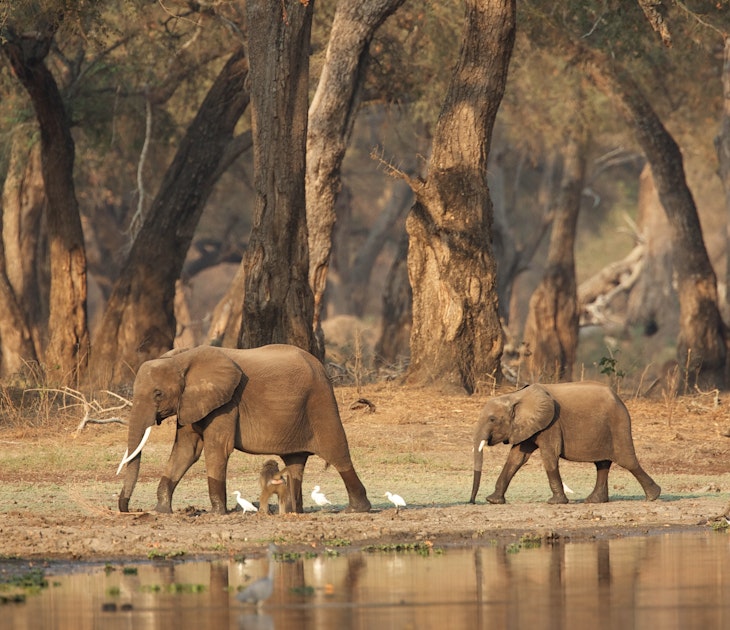
National Parks
Apr 25, 2024 • 7 min read
The African elephant is perhaps the most enduring symbol of nature’s grace and fragility. Here’s where to spot one (or many) in the wild.

Mar 20, 2024 • 8 min read

Mar 4, 2024 • 8 min read

Feb 20, 2024 • 17 min read

Jan 31, 2024 • 6 min read
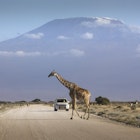
Dec 13, 2023 • 9 min read

Nov 22, 2023 • 9 min read

Oct 29, 2023 • 12 min read
Oct 16, 2023 • 9 min read

Aug 16, 2023 • 6 min read
- Search Please fill out this field.
- Manage Your Subscription
- Give a Gift Subscription
- Newsletters
- Sweepstakes
Critically Endangered Amur Leopard Twins Born at the San Diego Zoo: 'A Glimmer of Hope'
"There are so few of them left in their native habitat that every birth carries so much weight—and every living individual promises a glimmer of hope," said Gaylene Thomas with the zoo
The San Diego Zoo is celebrating the birth of the Amur leopard cubs — one of the world's rarest cat species.
According to a San Diego Zoo Wildlife Alliance (SDZWA) release, fewer than 300 of these critically endangered big cats remain in the world, making this twin cub birth "especially significant."
"Witnessing the birth of Amur leopards is always an emotional experience," said Gaylene Thomas, a wildlife care manager at the San Diego Zoo. "There are so few of them left in their native habitat that every birth carries so much weight — and every living individual promises a glimmer of hope."
The California zoo announced the leopard births on March 28, and the cubs recently emerged from the birthing den they share with mother Sitka for the first time. The baby leopards were in their den for several weeks, according to the zoo, bonding and learning from their mother.
Zoo staffers watched the cubs grow up through a remote camera system that allowed the animal caretakers to analyze the cubs' behaviors and document their development without interfering with bonding time.
"We are absolutely thrilled with the progress made by the cubs," said Thomas. "They have grown so much, and have already started showcasing their unique personalities. The cubs will get their first full veterinary exam soon, and we will know more, including their sex."
The cute cub duo — not yet named — makes up the third Amur leopard litter born at the San Diego Zoo. Previously, Sitka and the zoo's male Amur leopard Oskar had two female cubs in 2018 and two male cubs born in 2020.
These births were possible due to an initiative from the Association of Zoos and Aquariums' Amur Leopard Species Survival Plan, which assesses how to maintain the populations of threatened and endangered animals.
RELATED Video: Nashville Zoo Welcomes Clouded Leopard Cub Twins — See Photos
Amur leopards are listed as critically endangered on the International Union for Conservation of Nature's (IUCN) Red List of Threatened Species, according to SDZWA.
The leopards' natural habitat is in the mountainous forests of eastern Russia and northern China , per National Geographic. A refuge area for the Amur leopard was created in 2012 along the Russian and Chinese border called the Land of the Leopard National Park, which helped populations in the region double over a decade.
Never miss a story — sign up for PEOPLE's free daily newsletter to stay up-to-date on the best of what PEOPLE has to offer, from juicy celebrity news to compelling human-interest stories.
"San Diego Zoo Wildlife Alliance's work in Asia is essential for conserving endangered species that call that region home," said Dr. Nadine Lamberski, the chief conservation and wildlife health officer for San Diego Zoo Wildlife Alliance. "The good news is, we see positive results. For example, through the efforts of numerous on-the-ground conservation organizations and zoological institutions, the Amur leopard population has recently increased by more than 50 percent.
"This is a monumental achievement, proving that conservation works and our vision to build a world where all life thrives can be realized. We only need to maintain the course, and ultimately, we will succeed," they added.
Related Articles

IMAGES
COMMENTS
Deep in Russia's wild Far East, is a little known reserve where the last strong-hold of the Amur Leopard exists. Amur Leopards were on the brink of extinction with just 19 - 26 wild individuals in 2007, but due to growing interest, there has been a considerable effort to preserve and increase this species, and the numbers are now going up ...
The Russian Far East - Siberian Tigers & Amur Leopards with Voygr Expeditions. The Amur leopard is the rarest of the big cats. It inhabits a narrow strip of land hemmed in by Russia, North Korea, and China. Primarily found in the Russian Far-East, the Amur leopard is critically endangered. Just around 90 individuals remain.
The Amur leopard is solitary. Nimble-footed and strong, it carries and hides unfinished kills so that they are not taken by other predators. It has been reported that some males stay with females after mating, and may even help with rearing the young. Several males sometimes follow and fight over a female.
Amur Leopard Profile Ten thousand kilometres Northeast of Kenya there's a cat whose scarcity has inspired great action on the part of international zoo associations. The Amur leopard is the critically endangered subspecies of the famous African safari attraction; an animal who has been persecuted for its good looks to the point of becoming ...
Siberian tiger & Amur leopard safaris. Back in 2006, BBC Planet Earth captured footage of the Amur leopard in Kedrovaya Pad National Park, an astonishing achievement given this is the world's rarest cat - at the time there were thought to be just 40 individuals left in the wild. Perhaps the ultimate big cat safari then is one that gives you ...
The Amur leopard (Panthera pardus orientalis) is a leopard subspecies native to the Primorye region of southeastern Russia and northern China.It is listed as Critically Endangered on the IUCN Red List, as in 2007, only 19-26 wild leopards were estimated to survive in southeastern Russia and northeastern China.. As of 2015, fewer than 60 individuals were estimated to survive in Russia and China.
We need this day as there may be people booking just the Amur leopard or Siberian tiger sections of the trip and so people will be departing and arriving tomorrow and so airport transfers are needed. ... Good work. The two Europeans joined on the safari were very helpful me at all times. B.A. Mahipala - Sri Lanka. Royle Safaris. 5. 2019-02 ...
Slowly stalking down the snowy hillside, the Amur leopard watches its prey through the trees. In the clearing below, a sika deer munches on tree bark, one of its few remaining food sources during the cold Russian winter. The leopard crouches, its body so low to the ground that its belly fur brushes the snow. Suddenly it bounds and springs forward, tackling the deer from 10 feet away.
The Amur leopard is a rare subspecies of leopard. They can be found in cold environments and face the harshest of winters. Read on to discover more interesting facts about them. • Sometimes Amur leopards wrap their tail around themselves to keep warm. • Easily told apart from other leopard subspecies by their widely spaced rosettes with ...
Siberian Tiger & Amur Leopard Tracking Tour. Hidden away in the temperate forests of the incredible Russian Far East are two of the worlds rarest and most elusive animals in the whole world. The Siberian tiger is the largest species of cat in the world and the Amur leopard is the rarest subspecies of cat in the world.
Female Amur leopards give birth to 2-3 cubs after the gestation period of 92-95 days. A newborn cub weighs 500-700 g (18-25 oz). The young open their eyes 7-10 days after birth and begin to crawl on the 12th-15th day. By the second month, they emerge from their dens and also begin to eat meat.
This tour is a pioneering tour and you will be among the first ever tourists to come here and the first to spend time here during the wonderful winter time to try and find and photograph the Amur leopard. We have had incredible success in running these tours with so far a 100% success rate in leopards arriving at our hide.
1960- Amur Leopards went extinct in the wild in South Korea. 1972- Survey of Leopard population revealed 25-30 individuals. 1972 to 1973- Dmitry Pikunov and Vladimir Abramov estimated the first reliable population number for Amur leopards remaining in Russia of 38-46 individuals. 1970 to 1983- 80% of Amur Leopard habitat was destroyed.
In the extreme southeast of the country, close to the borders with China and North Korea, Russia has established a 650,000-acre national park to protect what is regarded as the world's rarest cat, the Amur leopard. Around 70-80 individuals are estimated to survive in the wild, making this protected area - which covers around 60% of the leopards' habitat - a vital step forward in the ...
This is the third Amur leopard litter born at the San Diego Zoo. The first litter was in April 2018 (with two females), and the second was in April 2020 (with two males). ... Success is made possible by the support of members, donors and guests to the San Diego Zoo and San Diego Zoo Safari Park, who are Wildlife Allies committed to ensuring all ...
Camera trap footage from eastern Russia filmed in November and December of 2013 and made available this month, reveals how the highly endangered Amur leopard raises kittens in the wild as well as giving an insight into family behavior. In November 2013, Land of the Leopard National Park and WWF started a joint project, "Leopard's Reality ...
Guests at the reopened San Diego Zoo are getting a first look at two endangered Amur leopard cubs, born April 26, 2020, as they explore their outdoor habitat...
We are on a mission to save wild tigers and Amur leopards for future generations by raising awareness and funding carefully chosen conservation projects. We support locally appropriate programs that address key conservation issues through anti-poaching activities, population monitoring, wildlife health monitoring, conflict mitigation, education ...
Fewer than 100 Are Believed to Still Survive in Their Historic Range. Guests at the reopened San Diego Zoo are getting a first look at two endangered Amur leopard cubs, born April 26, 2020, as they explore their outdoor habitat with mom, Satka. The cubs' birth is particularly significant for their species, as fewer than 100 Amur leopards are ...
Siberian tiger & Amur leopard safaris. Back in 2006, BBC Planet Earth captured footage of the Amur leopard in Kedrovaya Pad National Park, an astonishing achievement given this is the world's rarest cat - at the time there were thought to be just 40 individuals left in the wild. Perhaps the ultimate big cat safari then is one that gives you ...
The leopard is the epitome of stealth. Its very name brings mental pictures of this great spotted cat crouched on a tree limb awaiting the approach of a deer, or of a sleek, spotted body slipping silently through the dry savanna grass with scarcely a ripple as it nears its chosen target. Amur leopards love climbing, exploring, and playing with ...
The best places to see leopards. Botswana: Botswana is excellent for spotting leopards, and a testament to the leopard's adaptability - leopards are commonly seen in watery habitats like Chobe National Park and the Okavango Delta, but also in the desert-like Central Kalahari Game Reserve (CKGR). Kenya: Kenya 's parks are prime leopard ...
The San Diego Zoo is celebrating the birth of the Amur leopard cubs — one of the world's rarest cat species. According to a San Diego Zoo Wildlife Alliance (SDZWA) release, fewer than 300 of ...